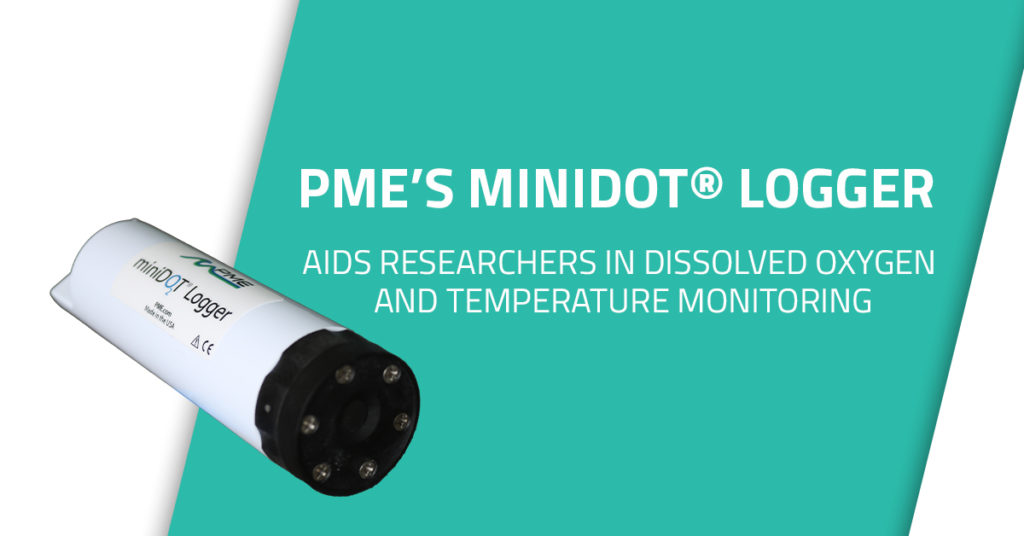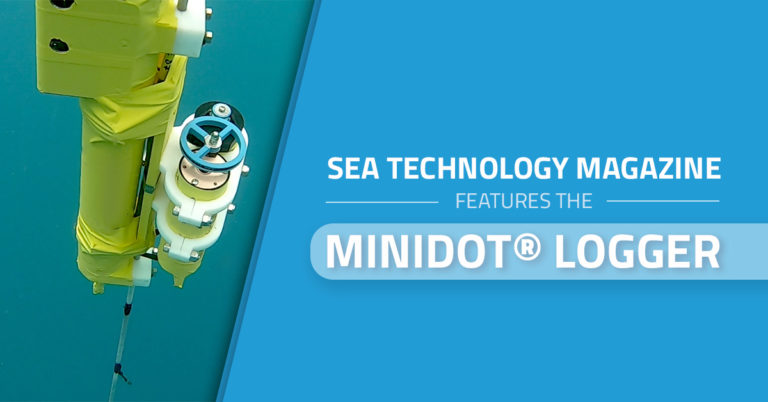
Alyson Hall Selected for PME New Researcher Program
September 9, 2022
What is Dissolved Oxygen?
September 21, 2022The origin of the miniDOT® Logger came from a quick sketch on a napkin in a bar by the founder of PME, Mike Head in 2009. From there the R&D process began and the miniDOT’s first calibration was made in 2011. For more than a decade, miniDOTs have been chosen by researchers, universities, and government agencies worldwide to learn more about the water around them and provide the necessary data to make educated decisions on how to maintain and improve water quality.
Good decisions can’t be made without good data. Researchers’ instruments need to be reliable and have accuracy that lasts over time. Not only this, but their instruments must also work in seemingly endless conditions, from the warm coastal waters of Florida to the deep depths of the Antarctic. Almost anywhere dissolved oxygen and temperature data is needed to be collected, the miniDOT can perform. However, the question often posed, how is the miniDOT able to collect the data that it does, with the reliability needed?
miniDOT® Breakdown
Formfactor
Do not let the compact size fool you, there is a lot packed into this practical logger. With a formfactor that can fit in your hand, the miniDOT® Logger is rugged and reliable. The miniDOT’s size and shape allow for many different deployment applications including underwater caves, boreholes and wells.
Batteries
Two AA batteries make the laborious and time-consuming task of shipping your logger back to the manufacturer to replace semi-permanent batteries a thing of the past. By simply having AA batteries on hand at the lab, your miniDOT can be deployed immediately without the need to conduct a service with our maintenance team. With less time in the shop, your logger can work for you longer.
Optical Sensor and Monitoring Timeframe
For those longer deployments, only the most stable sensors can stand the test of time – that is why the miniDOT is fitted with an optical sensor that can hold its calibration for up to one year without researcher intervention. Our extensive multi-point calibration preserves the miniDOT’s accuracy over time, providing the best data possible for your research. PME’s sensing foil is located inside the logger itself and does NOT degrade or require multiple replacement pieces within the same year saving those who utilize and rely on the miniDOT Logger time and money by replacing sensors when they fail.
Anti-Fouling Solutions
Even the best optical sensors can fail due to fouling. This inspired the PME team to design two forms of anti-fouling options to meet the challenge. For shorter deployments, a copper mesh or copper plate is applied to the sensing face of the miniDOT to discourage microbial growth. For longer deployments, a wiper can be installed, that will physically remove anything adhering to the sensor for up to one year depending on the wiping intervals.
Software
PME understands that data isn’t worth much without software that can organize and plot it. This is why all necessary software comes built into the logger with every miniDOT purchase. The software is plug-and-play, making data interpretation the easiest aspect of the research process.
PME is proud to provide the miniDOT® Logger to the world’s scientific community. Our team takes pride in being a part of the solution for the many environmental challenges and are excited to learn more about the research projects PME technologies will help with in the future. Follow this link to request a quote for the miniDOT® Logger.






